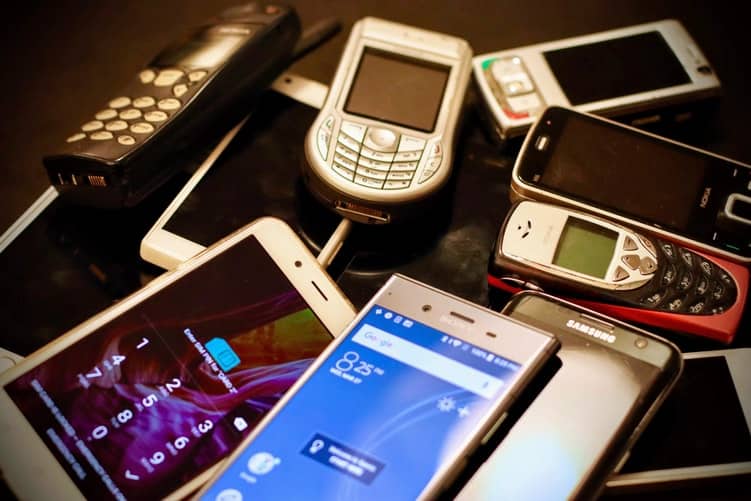The Nigerian society had its first feel of mobile telephony in 2001. Interestingly, the Global System for Mobile Communications (GSM) is almost in its 19th year in Nigeria. At inception, what mattered was getting a means of virtual communication without having to depend on people who owned land phones to communicate.
Apparently, this ended the monopoly of the only telecommunication company, Nigerian Telecommunications Limited (NITEL) which supplied wired telephony. It cannot be denied that this probably contributed to the death of this government agency, including other systems. For instance, the commercial Internet access market — characterised by cybercafés — patronage has consistently dwindled.
According to GSMA, as of 2019, smartphones remained the primary access to the Internet despite the influx of other mobile and smart devices. In another report, approximately 23% of the population in sub-Saharan Africa use the mobile Internet on a regular basis. And by 2025, almost half of the population would have subscribed to a mobile service.
This, to an extent, depicts that the level of Internet penetration has resulted more from personal use of smartphones than the use of other browsing devices.
Although the introduction of mobile phones engendered the possibilities for connectivity without borders at that time, it was a luxury — phone and the Subscriber Identity Module (SIM) card likewise — only the rich could afford. The prices were as high as ₦100,000 ($970)* and ₦50,000 ($485), respectively.
Agreeably, this charge can be described to be common with new inventions. But depending on the product, this high price may not last long. Often, new technologies are only costly until competition comes in.
Sometimes, the price of the older product may not reduce probably because it is yet to get back the cost of research and development. And while it is possible for the competition to have a relatively higher price because it came with an upgrade, what matters is that a buyer now has a number of choices. And this brings about the inclusiveness of different demographics.
Techpoint got a man in his 60s to share his mobile phone journey. A key piece of information in his submission revealed that mobile phones came not just as a luxury but also as a necessity and that has remained until today.
He recounts how the trendy cellphones at the time were Nokia 3310 and the Samsung series. But he had to wait three years before he could afford one, even as a public servant.
 “I bought my first phone in 2004. It was [a] Nokia 3310. The MTN SIM card cost ₦25,000 ($193.8) while the phone was ₦20,000 ($155). It was through a loan which was deducted from my salary in installments.”
“I bought my first phone in 2004. It was [a] Nokia 3310. The MTN SIM card cost ₦25,000 ($193.8) while the phone was ₦20,000 ($155). It was through a loan which was deducted from my salary in installments.”
And because it was still a scarce commodity, he decided to use the phone commercially; he ran a business centre where anyone who came to call was billed per minute. By 2005, when cellphones had become relatively affordable, he bought two more phones — Motorola C117 and Samsung N700 — at ₦6,300 ($47) and ₦9,400 ($70), respectively.
 Compared to what is obtainable now, he goes ahead to attest to the functionality of the devices.
Compared to what is obtainable now, he goes ahead to attest to the functionality of the devices.
“I could only call and text messages on these phones.”
In 2012, he bought a feature phone, Nokia C1-01, at ₦12,000 ($76). He says, aside from calls and texts, it allowed browsing. He was able to access his email and social media platforms like Facebook and 2go, etc.
 He concludes by adding that he got his first smartphone in 2014, a Huawei brand, at an MTN office for ₦10,000($55.6). Subsequently, he had owned other smart devices with varying prices depending on how much he’s willing to give. His emphasis, however, is this has been easy given the varieties available.
He concludes by adding that he got his first smartphone in 2014, a Huawei brand, at an MTN office for ₦10,000($55.6). Subsequently, he had owned other smart devices with varying prices depending on how much he’s willing to give. His emphasis, however, is this has been easy given the varieties available.
While this may be similar to the story of most people, this transition wouldn’t have been possible without the various indigenous and global players that have made it into the telecommunications industry within the past two decades.
Although the relative affordability of smartphones is debatable since the poverty rate in the country cannot be dismissed, there are convenient means through which the cheaper phones can be acquired. The fact that smartphones and smart feature phones keep getting cheaper in the African markets is also a sign of a promising future to come.
What is your mobile phone journey like?
* Equivalent dollar values are based on the exchange rate of the year under consideration











